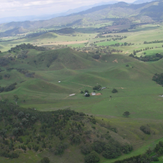
New studies on Lower Hunter air quality find coal impact low
Two new studies on air quality in the Lower Hunter are a useful addition to the available research on the impact coal trains and coal export terminals have on air quality in the region.
The two studies analysed the composition of dust particles collected at a range of sites in the Lower Hunter over a 12 month period, allowing the sources of dust to be identified.
The Lower Hunter Particle Characterisation Study, led by CSIRO and ANSTO, analysed the sources of PM2.5 (fine airborne particles) at four monitoring stations and PM2.5-10 (coarse airborne particles) at two monitoring stations. Particles of these sizes are invisible to the eye, can be inhaled and have health implications, with PM2.5being the smallest particles with the greatest health impacts. The study found that coal could contribute at most 10% of PM2.5-10 particles, with further investigations need to quantify the contribution. No coal was specifically detected in the PM2.5 samples the particle size of greatest health concern.
The Lower Hunter Dust Deposition Study, conducted by environmental consultancy AECOM, measured the amount of dust deposited at 12 sites around the rail corridor and port infrastructure. Dust deposition analyses larger visible particles and is a measure of amenity. Annual dust deposition rates ranged between 0.5 and 1.1 grams per square metre per month, well below the NSW EPA maximum criteria of 4 grams per square metre per month, with coal contributing 10% on average to deposited dust.
The studies follow the 2013 Upper Hunter Particle Characterisation Study, which analysed the source of PM2.5in Singleton and Muswellbrook. That study found that all soil dust, including from coal mining and agriculture, contributed 1112% of PM2.5.
"These rigorous scientific studies show that coal dust is relatively minor source of particulate pollution in the region", said Mr Galilee.
"This research cuts through the emotive debates of recent years to provide an objective picture of the various sources of air pollution in the region”.
"This research also contradicts the alarmist rhetoric used by some in relation to coal’s impact on air quality in the Lower Hunter”.
"Air quality in the region is good, meeting Australia's strict national standards the vast majority of the time, and coal dust is a relatively small contributor to particulate pollution in the region”.
Contact: Harry Hughes | hhughes@nswmining.com.au | 0409 758 734 | 02 9274 1419